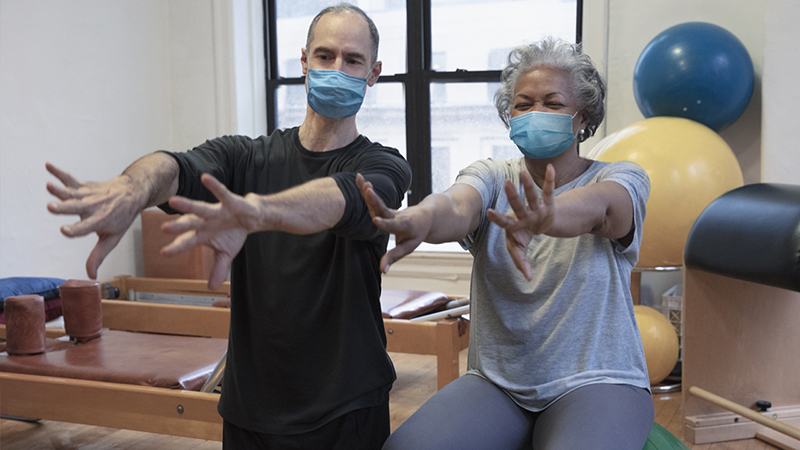
Physical Therapy
At Northwestern Medicine, we aim to help you return to your highest-possible level of function and independence. Physical therapists can help you improve your mobility, strength and endurance, leading to a better quality of life.
Our licensed therapists provide care at rehabilitation locations throughout Chicagoland. We offer one-on-one therapy for newborns, teens and adults with common to complex illnesses and injuries.
Your physical therapist will create a treatment plan based on your specific goals, which may include:
- Strength
- Range of motion (ROM)
- Endurance
- Coordination
- Balance
- Mobility
- Safety awareness
Treatment Plan
After an initial evaluation, you and your therapist will develop a treatment plan based upon the results of the assessment and a discussion of your personal goals. Treatment may include:
- Exercise: To help you maintain or gain mobility by increasing your:
- Strength
- Range of motion
- Endurance
- Balance and coordination
- Equipment: Crutches, canes, walkers or wheelchairs may be used to help your:
- Mobility
- Balance
- Positioning
- Education: We teach you and your caregiver so you can be safer at home with activities such as:
- Exercise
- Proper positioning
- Transfer techniques
- General mobility
Schedule a Therapy Appointment
To make a therapy appointment, please call 630.933.1500. Convenient weekday appointment times are available, including early morning and evening appointments (at select locations). Virtual appointments are also available.
Conditions
- Arthritis
- Balance and vestibular disorders
- Brain injury
- Breast cancer rehabilitation
- Concussion
- COVID 19 recovery rehabilitation
- Gait ataxia
- Guillain Barre
- Head and neck cancer rehabilitation
- Joint replacement
- Lymphedema
- Multiple sclerosis (MS)
- Oncology rehabilitation
- Orthopaedic conditions
- Pain management
- Parkinson's disease
- Pelvic Floor Therapy
- Progressive neuromuscular conditions (ALS, Myastenia Gravis, Muscular Dystrophy, Myositis)
- Spasticity
- Spinal cord injury
- Sports rehabilitation
- Stroke
- Temporomandibular joint disorder (TMD, TMJ)
Treatments and Specialty Services
- Aquatic therapy
- Cancer therapy
- Concussion Clinic
- Driver rehabilitation
- Dry needling
- Fall prevention
- Graston therapy
- Joint replacement
- LSVT BIG
- Manual therapy
- Massage therapy
- Neurological rehabilitation
- Rehabilitation Technology
- Solid organ transplant rehabilitation
- Spine rehabilitation
- Temporomandibular joint (TMJ/TMD) therapy
- Trauma rehabilitation
- Vestibular rehabilitation
- Wheelchair and positioning
- Women’s health rehabilitation





